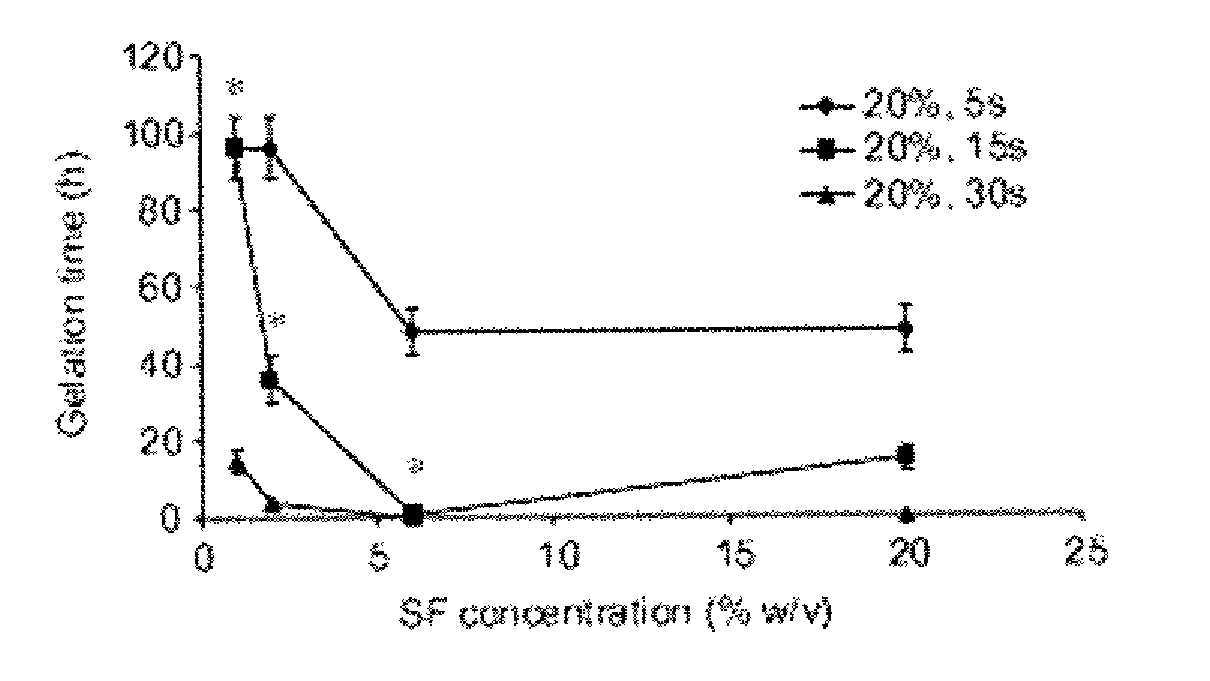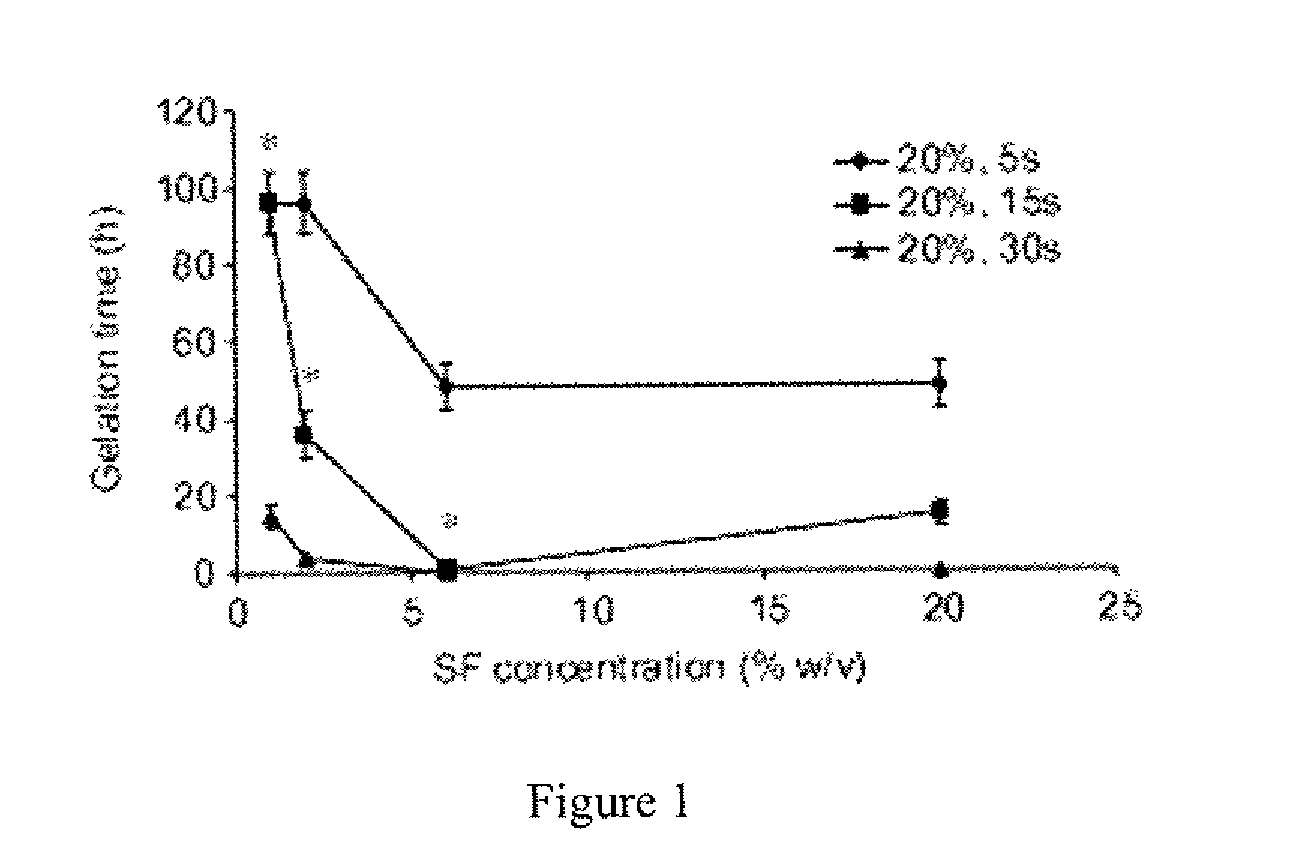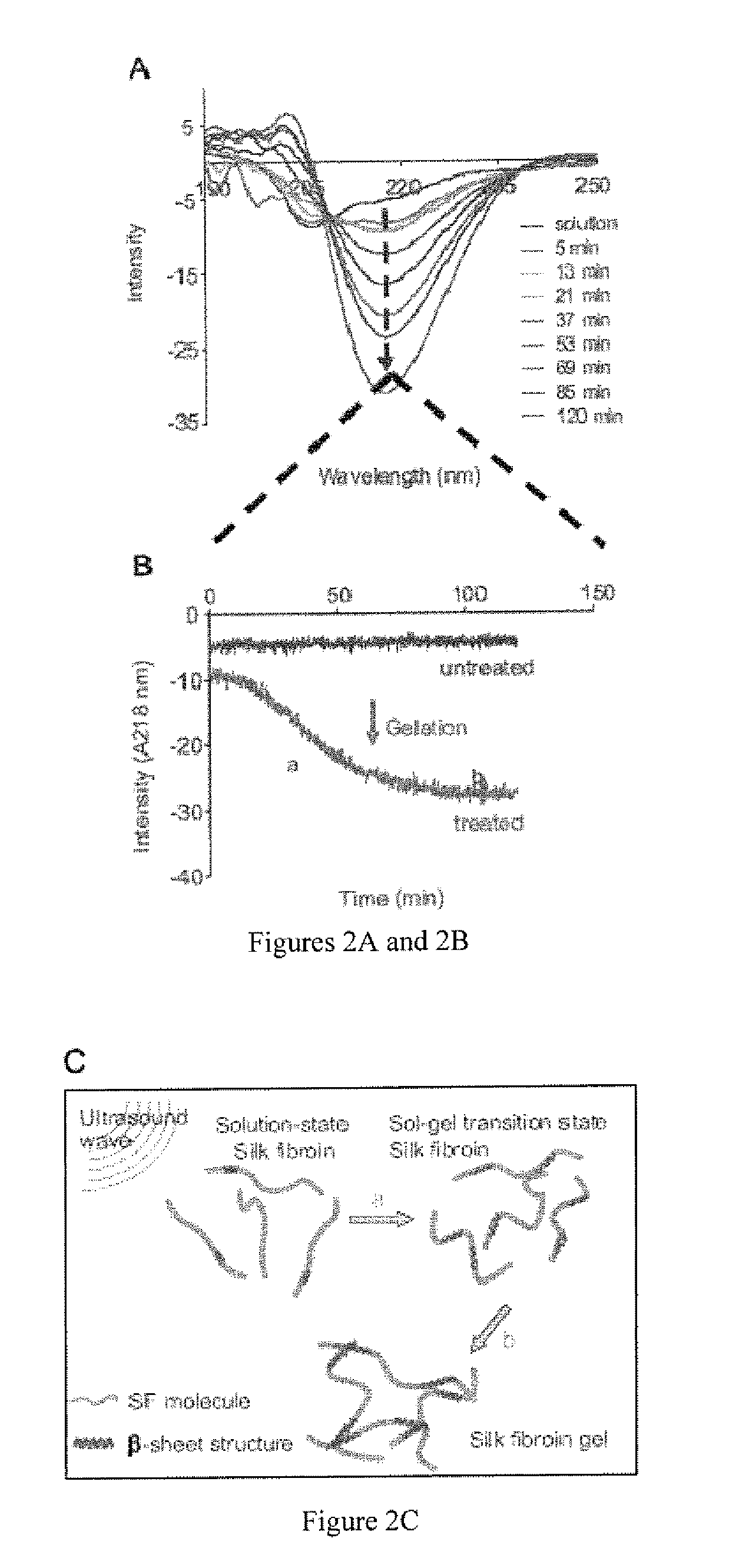Method for silk fibroin gelation using sonication
a silk fibroin and gelation technology, applied in the field of silk fibroin gelation using sonication, can solve the problems of labile bioactive molecules and too slow for active cell incorporation
- Summary
- Abstract
- Description
- Claims
- Application Information
AI Technical Summary
Benefits of technology
Problems solved by technology
Method used
Image
Examples
example 1
Silk Fibroin Solutions
[0063]Silk fibroin aqueous stock solutions were prepared as previously described (Sofia et al., 54 J. Biomed. Mater. Res. 139-48 (2001)). Briefly, cocoons of B. mori were boiled for 40 min. in an aqueous solution of 0.02M sodium carbonate, and then rinsed thoroughly with pure water. After drying, the extracted silk fibroin was dissolved in 9.3M LiBr solution at 60° C. for 4 hours, yielding a 20% (w / v) solution. This solution was dialyzed against distilled water using Slide-a-Lyzer dialysis cassettes (MWCO 3,500, Pierce, Rockford, Ill.) for two days to remove the salt. The solution was optically clear after dialysis and was centrifuged to remove the small amounts of silk aggregates that formed during the process, usually from environment contaminants that are present on the cocoons. The final concentration of silk fibroin aqueous solution was approximately 8% (w / v). This concentration was determined by weighing the residual solid of a known volume of solution af...
example 2
Silk Solutions with Various Salt Concentrations and pH
[0064]To determine the effect of salt concentration on silk gelation, KCl and CaCl2 stock solutions at 1M were added to silk solutions to reach a final salt concentration of 20 mM to 200 mM. To determine the effect of pH on gelation, silk solutions were titrated with 1M HCl or NaOH solutions and the pH was monitored with a pH meter.
example 3
Screening for Silk Gelation Conditions
[0065]To determine silk gelation under various sonication conditions, 0.5 ml of silk (water) solution in a 1.5 ml Eppendorf tube was sonicated with a Branson 450 ultrasonicator (Branson Ultrasonics Co., Danbury, Conn.), which consisted of the Model 450 Power Supply, Converter (Part No. 101-135-022), ½″ Externally Threaded Disruptor Horn (Part No. 101-147-037), and ⅛″ diameter Tapered Microtip (Part No. 101-148-062). The power output was varied from 10% to 50% amplitude (3 watts-21 watts) and sonication time was varied from 5 sec.-30 sec. To determine the effects of salts and pH on gelation, 0.5 ml of the silk solutions prepared as described above were sonicated at 20% amplitude (7 watts) and 15 sec. Solutions were incubated at 37° C. after sonication and the sol-gel transition was monitored visually by turning over the tube and checking the opacity change of the solution (Matsumoto et al.).
[0066]Based on preliminary results, silk fibroin concent...
PUM
| Property | Measurement | Unit |
|---|---|---|
| Time | aaaaa | aaaaa |
| Time | aaaaa | aaaaa |
| Molar density | aaaaa | aaaaa |
Abstract
Description
Claims
Application Information
 Login to View More
Login to View More - R&D
- Intellectual Property
- Life Sciences
- Materials
- Tech Scout
- Unparalleled Data Quality
- Higher Quality Content
- 60% Fewer Hallucinations
Browse by: Latest US Patents, China's latest patents, Technical Efficacy Thesaurus, Application Domain, Technology Topic, Popular Technical Reports.
© 2025 PatSnap. All rights reserved.Legal|Privacy policy|Modern Slavery Act Transparency Statement|Sitemap|About US| Contact US: help@patsnap.com



